Abstract
Aksoy, M., Dinçol, K., Erdem, Ş., Akgün, T., and Dinçol, G. (1972).Brit. J. industr. Med.,29, 56-64. Details of blood changes in 32 patients with pancytopenia associated with long-term exposure to benzene. A study was performed on 32 pancytopenic patients who had had long-term exposure to benzene. They had been subjected to high concentrations of benzene varying from 150 to 650 p.p.m. for from 4 months to 15 years. Apart from four, in whom the platelet count was normal, all had pancytopenia. As the bone marrow punctures of the pancytopenic patients showed a great variation from acellularity to hypercellularity, the patients were classified and studied according to the bone marrow findings.
Anaemia was macrocytic in 14, in three of whom a megaloblastic erythropoiesis was detected. The findings in some patients, such as mild reticulocytosis, hyperbilirubinaemia, erythroblastaemia, an increase in quantitative osmotic fragility and in faecal urobilinogen excretion as well as elevated serum LDH levels, suggested that these might be attributed to either increased haemolysis or the presence of ineffective erythropoiesis.
The HbF content in 20 out of 24 pancytopenic patients was above normal, ranging between 3·2% and 19·5%, with a mean of 6·1%. Mean values of HbF in groups with a hypoplastic, hyperplastic, and normoplastic bone marrow were essentially the same. The absolute amounts of HbF exceeded 400 mg/100 ml in only 8 out of 24 patients, all of whom survived.
The HbA2 level was within normal limits in 21 out of 24 pancytopenic patients. It was definitely decreased in one and slightly so in three. These findings may suggest that HbA2 occasionally shows a tendency to decrease in some patients with chronic benzene poisoning. The maturation arrest in both the myeloid and erythroid elements was the most frequently encountered finding.
In the bone marrow examinations, gaint erythroid precursors varying from 9% to 72% were detected in two patients. In one of them, who also had hepatosplenomegaly, the development of preleukaemia was accepted. Varying mortality rates were estimated in the above-mentioned groups. The results obtained from treatment with steroids, androgens, phyto-haemagglutinin, and oxymetholone are also described.
Full text
PDF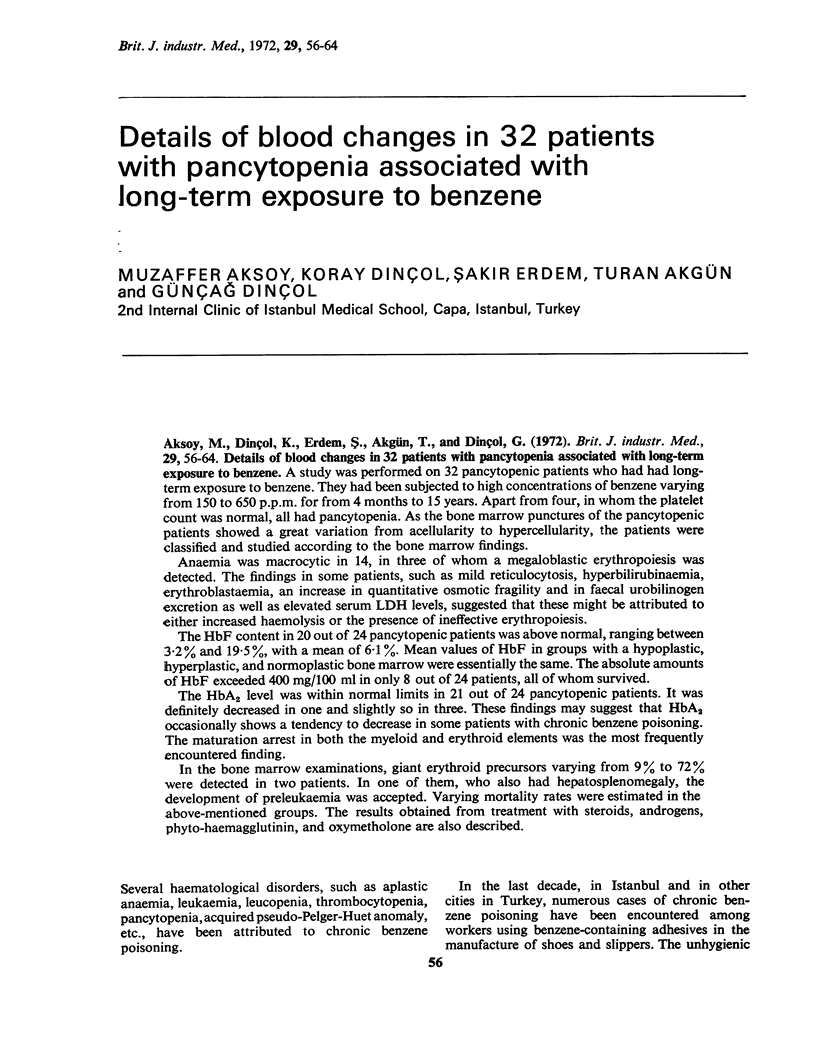
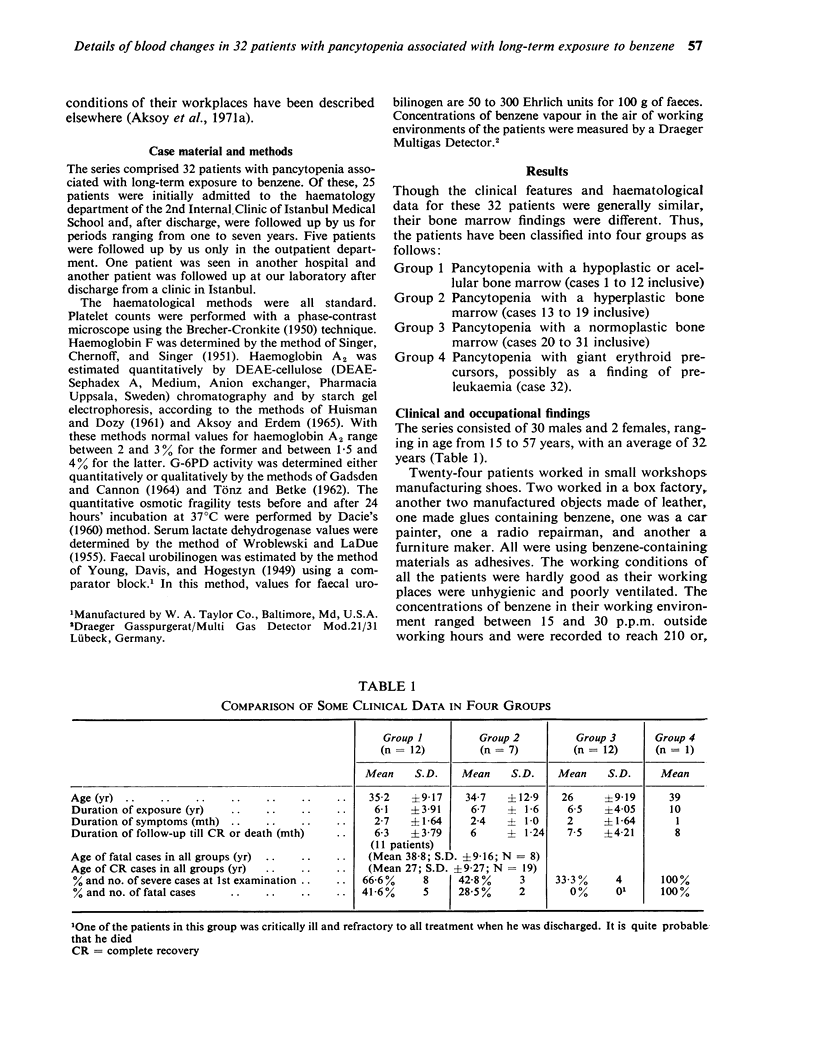

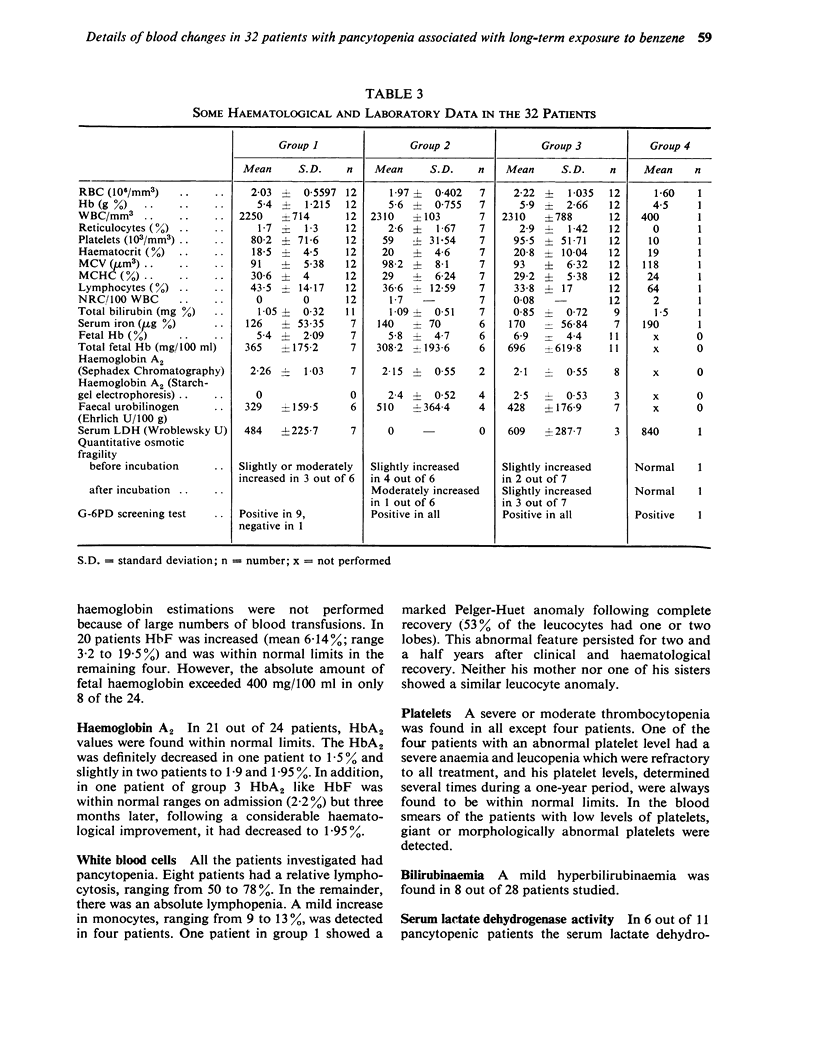
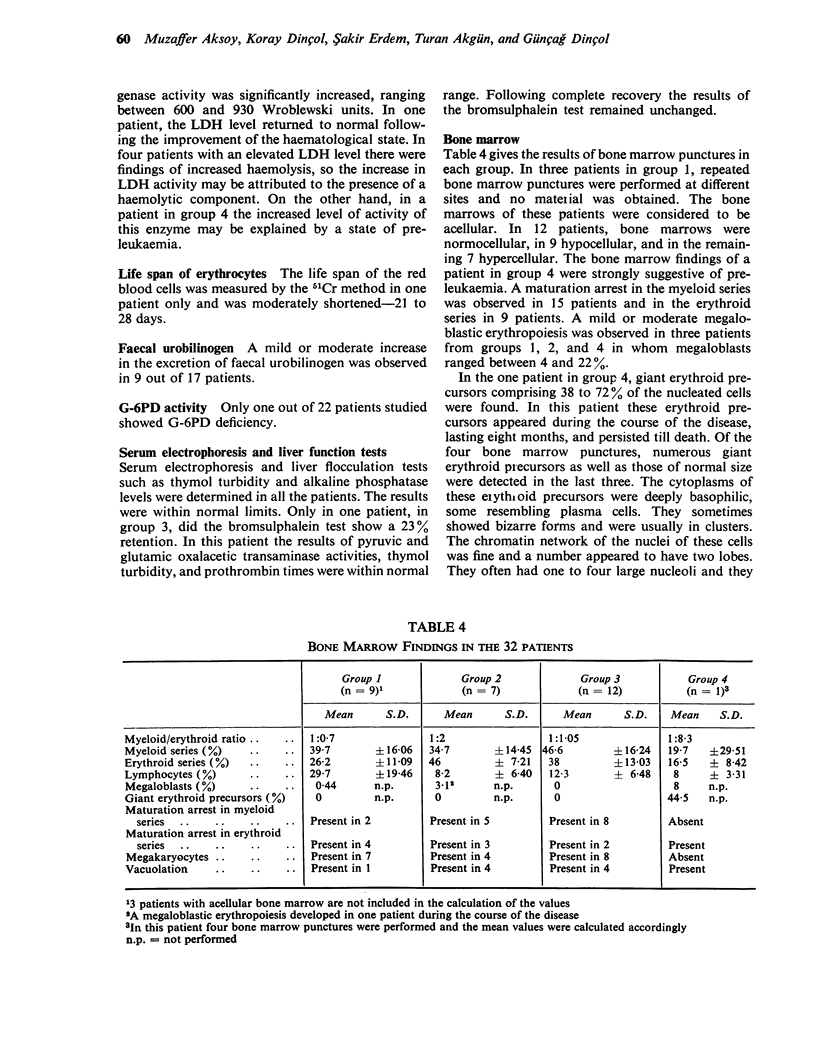
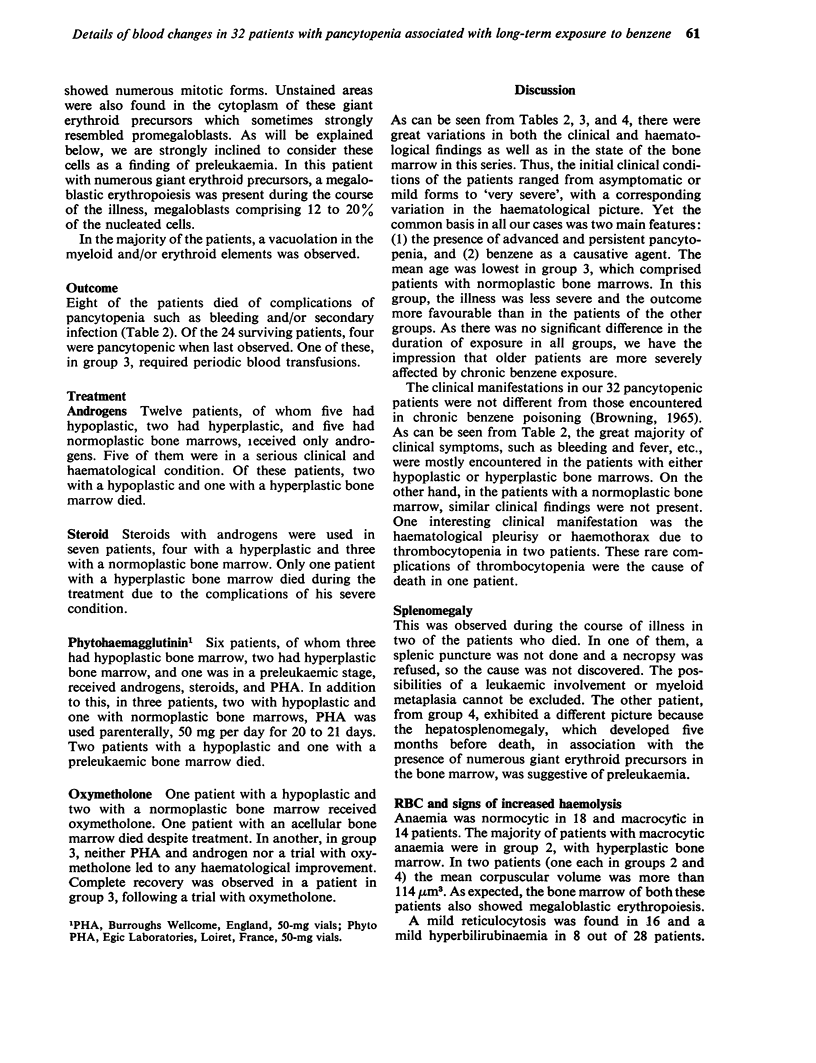
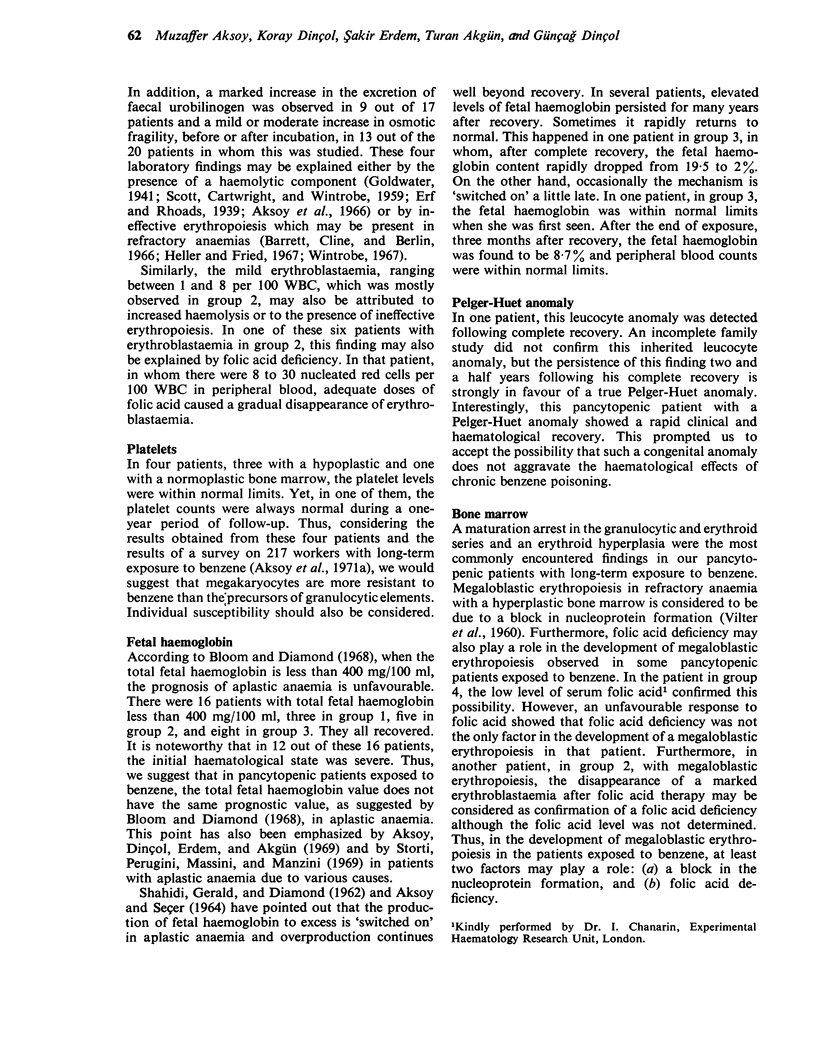
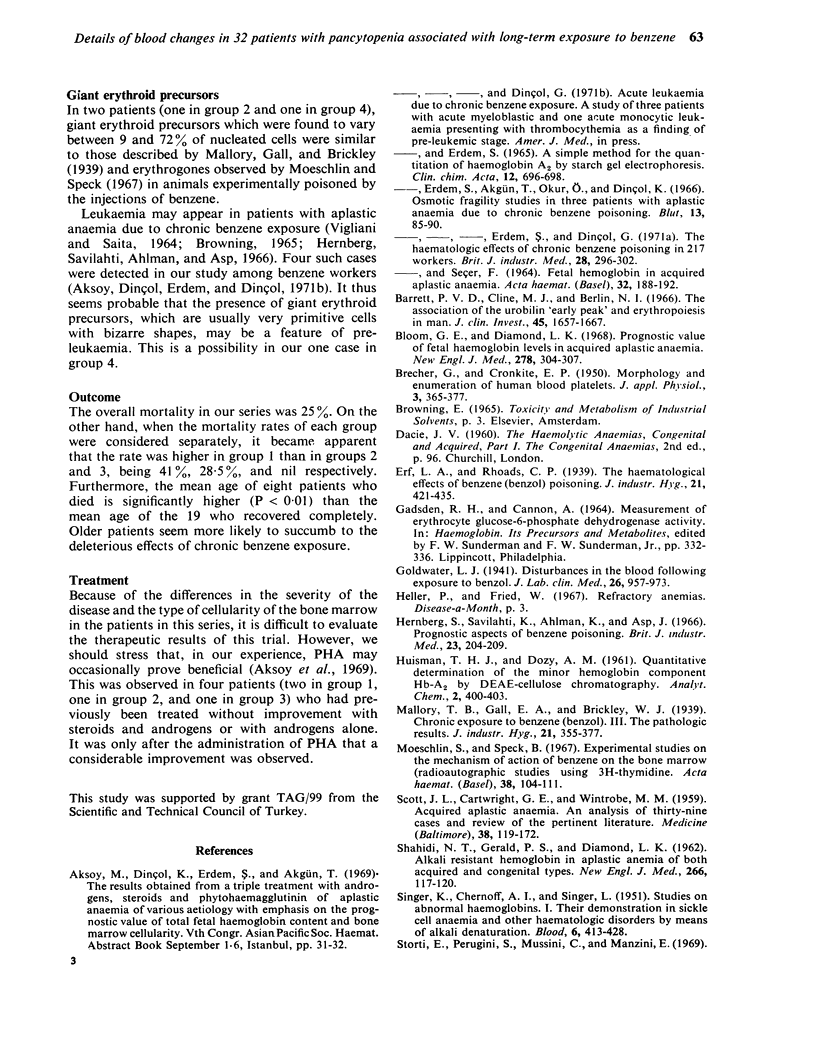

Selected References
These references are in PubMed. This may not be the complete list of references from this article.
- Aksoy M., Erdem S. A simple method for the quantitation of haemoglobin-A2 by starch gel electrophoresis. Clin Chim Acta. 1965 Dec;12(6):696–698. doi: 10.1016/0009-8981(65)90152-x. [DOI] [PubMed] [Google Scholar]
- Aksoy M., Erdem S., Akgün T., Okur O., Dinçol K. Osmotic fragility studies in three patients with aplastic anemia due to chronic benzene poisonong. Blut. 1966 May;13(2):85–90. doi: 10.1007/BF01632009. [DOI] [PubMed] [Google Scholar]
- BRECHER G., CRONKITE E. P. Morphology and enumeration of human blood platelets. J Appl Physiol. 1950 Dec;3(6):365–377. doi: 10.1152/jappl.1950.3.6.365. [DOI] [PubMed] [Google Scholar]
- Barrett P. V., Cline M. J., Berlin N. I. The association of the urobilin "early peak" and erythropoiesis in man. J Clin Invest. 1966 Nov;45(11):1657–1667. doi: 10.1172/JCI105473. [DOI] [PMC free article] [PubMed] [Google Scholar]
- Bloom G. E., Diamond L. K. Prognostic value of fetal hemoglobin levels in acquired aplastic anemia. N Engl J Med. 1968 Feb 8;278(6):304–307. doi: 10.1056/NEJM196802082780604. [DOI] [PubMed] [Google Scholar]
- HUISMAN T. H., DOZY A. M. Qunatitative determination of the minor hemoglobin component Hb-A2 by DEAE-cellulose chromatography. Anal Biochem. 1961 Aug;2:400–403. doi: 10.1016/0003-2697(61)90017-3. [DOI] [PubMed] [Google Scholar]
- Hernberg S., Savilahti M., Ahlman K., Asp S. Prognostic aspects of benzene poisoning. Br J Ind Med. 1966 Jul;23(3):204–209. doi: 10.1136/oem.23.3.204. [DOI] [PMC free article] [PubMed] [Google Scholar]
- Moeschlin S., Speck B. Experimental studies on the mechanism of action of benzene on the bone marrow (radioautographic studies using 3H-thymidine). Acta Haematol. 1967;38(2):104–111. doi: 10.1159/000209006. [DOI] [PubMed] [Google Scholar]
- SCOTT J. L., CARTWRIGHT G. E., WINTROBE M. M. Acquired aplastic anemia: an analysis of thirty-nine cases and review of the pertinent literature. Medicine (Baltimore) 1959 May;38(2):119–172. [PubMed] [Google Scholar]
- SHAHIDI N. T., GERALD P. S., DIAMOND L. K. Alkali-resistant hemoglobin in aplastic anemia of both acquired and congenital types. N Engl J Med. 1962 Jan 18;266:117–120. doi: 10.1056/NEJM196201182660303. [DOI] [PubMed] [Google Scholar]
- SINGER K., CHERNOFF A. I., SINGER L. Studies on abnormal hemoglobins. I. Their demonstration in sickle cell anemia and other hematologic disorders by means of alkali denaturation. Blood. 1951 May;6(5):413–428. [PubMed] [Google Scholar]
- WROBLEWSKI F., LADUE J. S. Lactic dehydrogenase activity in blood. Proc Soc Exp Biol Med. 1955 Oct;90(1):210–213. doi: 10.3181/00379727-90-21985. [DOI] [PubMed] [Google Scholar]


